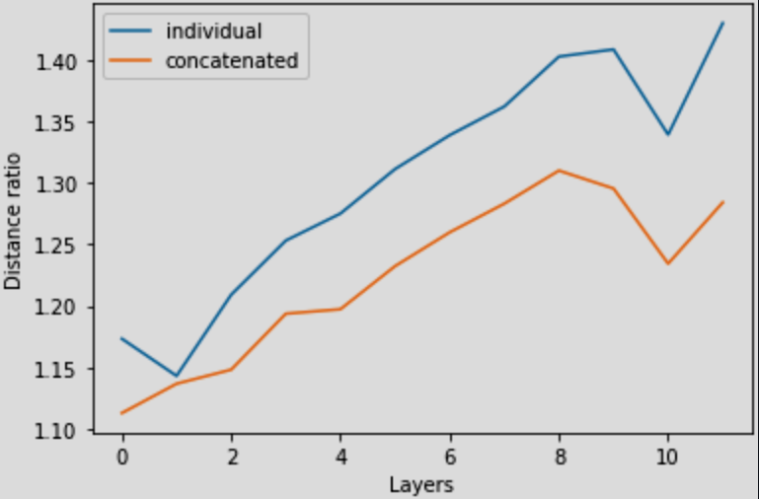Visualizing and Measuring the Geometry of BERT
-
What is the name of the BERT geometry paper?
Visualizing and Measuring the Geometry of BERT
-
Hewitt and Manning Hewitt (2019) BERT seems to create a direct representation of an entire dependency parse tree
The authors find that (after a single global linear transformation, which they term a “structural probe”) the square of the distance between context embeddings is roughly proportional to tree distance in the dependency parse.
Method
-
Attention probe method aims to predict a relation based on a
model-wide attention vector - model-wide attention vector is formed by concatenating the entries for
tokens 1 and 2in every attention matrix from every attention head in every layer- example 12 layer x 12 heads → 144 dimensional vector
- Attention probe can be used to predict whether or not a dependency relation exists or
identity of relation- first is binary classification
- second is multiclass classification task
- calculate model wide attention vector for every pair of tokens
Results
- Attention probe achieved 85.9% accuracy on binary classification and 71.9% on multiclass
- shows that syntactic information is encoded in attention activations
Analysis
-
The BERT geometry author present a mathematical argument for why tree distance is equal to the
squareof the distance in the embedding space -
We can define a metric space to have a power p embedding if

- syntactic parse trees appear to have a power 2 embedding in the BERT embedding space
- based on attention probe
- syntactic parse trees appear to have a power 2 embedding in the BERT embedding space
- Theorem: any tree with n nodes has a power 2 embedding into $\mathbb{R}^{n-1}$
- proof by induction
- Can basically take orthogonal steps in the space to get any distance needed

-
Clustering in the BERT contextual embedding space

-
SemCor dataset has sentence pairs using the same keyword in
different sensesA: “He thereupon
went
to London and spent the winter talking to men of wealth.”
went
: to move from one place to another.
B: “He
went
prone on his stomach, the better to pursue his examination.”
went
: to enter into a specified state.
- BERT geometry SemCor experiment individual similarity ratio increases
at higher transformer layers- ratio of average distance to threshold of corresponding and opposite word sense
- concatenation is from concatenating opposite sense sentences and encoding

Conclusions
This paper presents a simple initial analysis into the geometry of BERT.
Reference
@article{DBLP:journals/corr/abs-1906-02715,
author = {Andy Coenen and
Emily Reif and
Ann Yuan and
Been Kim and
Adam Pearce and
Fernanda B. Vi{\'{e}}gas and
Martin Wattenberg},
title = {Visualizing and Measuring the Geometry of {BERT}},
journal = {CoRR},
volume = {abs/1906.02715},
year = {2019},
url = {http://arxiv.org/abs/1906.02715},
eprinttype = {arXiv},
eprint = {1906.02715},
timestamp = {Thu, 13 Jun 2019 13:36:00 +0200},
biburl = {https://dblp.org/rec/journals/corr/abs-1906-02715.bib},
bibsource = {dblp computer science bibliography, https://dblp.org}
}
